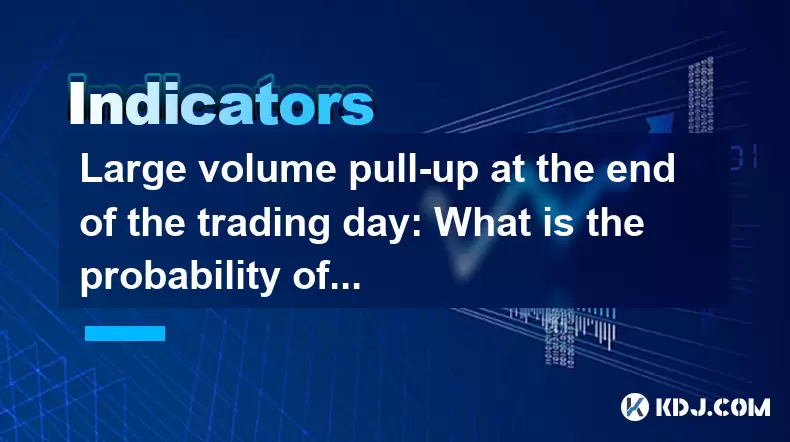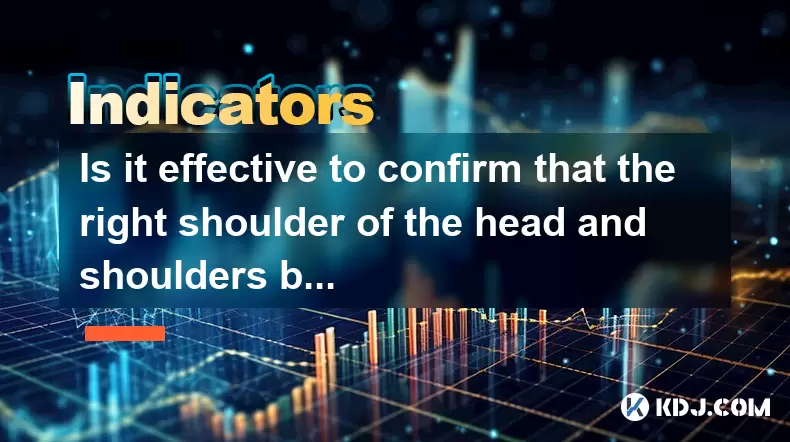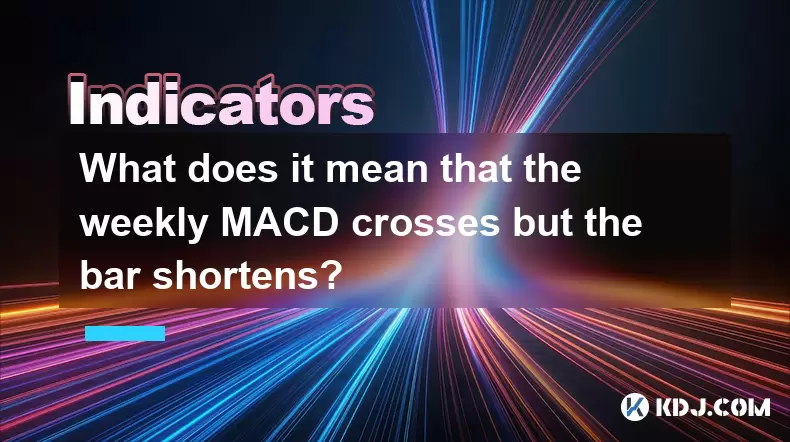-
 Bitcoin
Bitcoin $106,754.6083
1.33% -
 Ethereum
Ethereum $2,625.8249
3.80% -
 Tether USDt
Tether USDt $1.0001
-0.03% -
 XRP
XRP $2.1891
1.67% -
 BNB
BNB $654.5220
0.66% -
 Solana
Solana $156.9428
7.28% -
 USDC
USDC $0.9998
0.00% -
 Dogecoin
Dogecoin $0.1780
1.14% -
 TRON
TRON $0.2706
-0.16% -
 Cardano
Cardano $0.6470
2.77% -
 Hyperliquid
Hyperliquid $44.6467
10.24% -
 Sui
Sui $3.1128
3.86% -
 Bitcoin Cash
Bitcoin Cash $455.7646
3.00% -
 Chainlink
Chainlink $13.6858
4.08% -
 UNUS SED LEO
UNUS SED LEO $9.2682
0.21% -
 Avalanche
Avalanche $19.7433
3.79% -
 Stellar
Stellar $0.2616
1.64% -
 Toncoin
Toncoin $3.0222
2.19% -
 Shiba Inu
Shiba Inu $0.0...01220
1.49% -
 Hedera
Hedera $0.1580
2.75% -
 Litecoin
Litecoin $87.4964
2.29% -
 Polkadot
Polkadot $3.8958
3.05% -
 Ethena USDe
Ethena USDe $1.0000
-0.04% -
 Monero
Monero $317.2263
0.26% -
 Bitget Token
Bitget Token $4.5985
1.68% -
 Dai
Dai $0.9999
0.00% -
 Pepe
Pepe $0.0...01140
2.44% -
 Uniswap
Uniswap $7.6065
5.29% -
 Pi
Pi $0.6042
-2.00% -
 Aave
Aave $289.6343
6.02%
Large volume pull-up at the end of the trading day: What is the probability of a high opening the next day?
A large volume pull-up at day's end often signals strong late buying, hinting at potential bullish momentum for the next trading session.
Jun 17, 2025 at 11:28 am

Understanding the Phenomenon of Large Volume Pull-Up
A large volume pull-up at the end of the trading day is a common pattern observed in financial markets, including cryptocurrency. This occurs when an asset experiences a significant price increase during the final moments of a trading session, accompanied by unusually high trading volume. In the context of cryptocurrencies, this often happens on exchanges like Binance, Coinbase, or Kraken.
The phenomenon typically indicates late-day buying pressure from institutional investors or large traders (commonly known as whales). These entities may be positioning themselves for the next trading session or attempting to manipulate short-term sentiment. The key aspect to understand here is that the volume spike combined with a sharp upward move can signal strong demand entering the market.
Historical Patterns and Statistical Insights
Analyzing historical data provides some insight into whether a large volume pull-up at the end of the day increases the probability of a high opening the following day. Historical backtesting on major cryptocurrencies like Bitcoin (BTC), Ethereum (ETH), and Solana (SOL) shows recurring patterns:
- Positive Momentum Carryover: In many instances, especially during bullish market phases, assets that close higher on heavy volume tend to open higher the next day.
- Gap-Up Frequency: Studies show that approximately 60–70% of the time, a strong close with elevated volume leads to a gap-up in the next session, though this percentage varies depending on broader market conditions.
- Volatility Consideration: Cryptocurrencies are inherently more volatile than traditional assets, so while the correlation exists, it's not guaranteed.
It’s important to note that these observations are based on statistical tendencies rather than certainties. Market psychology, macroeconomic events, and exchange-specific news can all influence outcomes.
Factors Influencing the Next Day's Open
Several variables affect whether a high-volume end-of-day rally translates into a higher opening price the next day:
- Market Sentiment: If the overall market is positive, the likelihood of a higher open increases significantly.
- News Flow: Any breaking news after the pull-up—such as regulatory updates, ETF approvals, or major partnership announcements—can override technical patterns.
- Global Trading Sessions: Since crypto markets operate 24/7, the timing of the pull-up relative to global sessions (e.g., Asian vs. U.S.) can impact overnight price action.
- Order Book Depth: A sudden surge in buy orders before market close might suggest aggressive accumulation, which could continue post-close.
Each of these factors must be evaluated carefully before assuming a direct link between a strong close and a higher open.
Technical Analysis: Reading the Candles and Volume Profile
From a charting perspective, the candlestick pattern formed during a large volume pull-up at the end of the trading day can offer clues about future movement:
- Bullish Engulfing Pattern: If the final candle engulfs the previous one and closes near its high, it signals strength.
- Volume Profile Peaks: A pronounced spike in volume at the end of the session suggests that price levels are being accepted by buyers.
- Order Flow Indicators: Tools like order block indicators or smart money concepts (SMC) can help identify whether the pull-up was driven by informed participants.
Traders should also pay attention to liquidity gaps, especially if the rally pushes prices into zones with little support or resistance nearby. These areas can either hold strongly or break quickly, depending on overnight sentiment.
Practical Trading Strategies Around End-of-Day Moves
For traders aiming to capitalize on the potential of a high opening the next day following a large volume pull-up, several strategies can be employed:
- Position Sizing: Entering a small position at the close or placing a limit order slightly above the closing price can help capture early momentum.
- Stop-Loss Placement: Given the volatility of crypto markets, placing a tight stop-loss just below the body of the pull-up candle helps manage risk.
- Time-Based Exit Rules: Some traders prefer exiting within the first few hours of the new session to lock in gains before potential reversals occur.
- Monitoring Overnight Activity: Using platforms like Bybit or Deribit, traders can track futures funding rates and perpetual contract premiums to gauge overnight interest.
These tactics should be tested thoroughly using paper trading or historical simulation before applying them in live conditions.
Frequently Asked Questions
Q1: Does a large volume pull-up always result in a higher opening?
No, while there is a statistical tendency for the next day to open higher, it does not happen consistently. Factors such as news events, changes in sentiment, or macroeconomic developments can disrupt this pattern.
Q2: How can I differentiate between retail and institutional volume during a pull-up?
Institutional activity often manifests as smooth, sustained buying without significant slippage, whereas retail-driven moves may exhibit choppy price action and erratic volume spikes. Monitoring depth charts and order book imbalances can provide additional insights.
Q3: Is this pattern reliable across all cryptocurrencies?
Not necessarily. Larger, more liquid assets like BTC and ETH tend to exhibit more predictable behavior due to deeper market participation. Smaller altcoins may show erratic reactions even with high volume due to lower liquidity and higher manipulation risk.
Q4: What tools can I use to analyze end-of-day pull-ups effectively?
Popular tools include TradingView for candlestick and volume analysis, Glassnode or CryptoQuant for on-chain metrics, and order book analyzers like those found on Bitstamp or Kraken Pro. Combining multiple data sources enhances accuracy.
Disclaimer:info@kdj.com
The information provided is not trading advice. kdj.com does not assume any responsibility for any investments made based on the information provided in this article. Cryptocurrencies are highly volatile and it is highly recommended that you invest with caution after thorough research!
If you believe that the content used on this website infringes your copyright, please contact us immediately (info@kdj.com) and we will delete it promptly.
- 2025-W Uncirculated American Gold Eagle and Dr. Vera Rubin Quarter Mark New Products
- 2025-06-13 06:25:13
- Ruvi AI (RVU) Leverages Blockchain and Artificial Intelligence to Disrupt Marketing, Entertainment, and Finance
- 2025-06-13 07:05:12
- H100 Group AB Raises 101 Million SEK (Approximately $10.6 Million) to Bolster Bitcoin Reserves
- 2025-06-13 06:25:13
- Galaxy Digital CEO Mike Novogratz Says Bitcoin Will Replace Gold and Go to $1,000,000
- 2025-06-13 06:45:13
- Trust Wallet Token (TWT) Price Drops 5.7% as RWA Integration Plans Ignite Excitement
- 2025-06-13 06:45:13
- Ethereum (ETH) Is in the Second Phase of a Three-Stage Market Cycle
- 2025-06-13 07:25:13
Related knowledge

How to interpret the low opening the next day after the long lower shadow hits the bottom?
Jun 18,2025 at 12:22am
Understanding the Long Lower Shadow Candlestick PatternIn technical analysis, a long lower shadow candlestick is often seen as a potential reversal signal in a downtrend. This pattern occurs when the price opens, trades significantly lower during the session, but then recovers to close near the opening price or slightly above. The long wick at the botto...

How to operate the RSI indicator repeatedly in the 40-60 range?
Jun 18,2025 at 12:56am
Understanding the RSI Indicator and Its RelevanceThe Relative Strength Index (RSI) is a momentum oscillator widely used in cryptocurrency trading to measure the speed and change of price movements. Typically, the RSI ranges from 0 to 100, with levels above 70 considered overbought and below 30 considered oversold. However, when the RSI repeatedly stays ...

How strong is the MACD golden cross below the zero axis?
Jun 17,2025 at 11:00pm
Understanding the MACD Indicator in Cryptocurrency TradingThe Moving Average Convergence Divergence (MACD) is one of the most widely used technical indicators among cryptocurrency traders. It helps identify potential trend reversals, momentum shifts, and entry or exit points. The MACD consists of three main components: the MACD line, the signal line, an...

How effective is the golden cross of the William indicator double line in the oversold area?
Jun 17,2025 at 11:56pm
Understanding the William Indicator and Its Double Line SetupThe William %R (Williams Percent Range) is a momentum oscillator used to identify overbought or oversold conditions in a market. It ranges from 0 to -100, with readings above -20 considered overbought and below -80 deemed oversold. The double line setup refers to plotting two different timefra...

Is it effective to confirm that the right shoulder of the head and shoulders bottom volume at the 30-minute level is enlarged?
Jun 17,2025 at 11:42pm
Understanding the Head and Shoulders Pattern in Cryptocurrency TradingThe head and shoulders pattern is one of the most recognized reversal patterns in technical analysis, especially within cryptocurrency trading. It typically signals a potential shift from a bullish trend to a bearish one. This pattern consists of three peaks: the left shoulder, the he...

What does it mean that the weekly MACD crosses but the bar shortens?
Jun 18,2025 at 01:07am
Understanding the MACD IndicatorThe Moving Average Convergence Divergence (MACD) is a popular technical analysis tool used in cryptocurrency trading to identify potential trend reversals and momentum shifts. It consists of three main components: the MACD line, the signal line, and the histogram (also known as the bar). The MACD line is calculated by sub...

How to interpret the low opening the next day after the long lower shadow hits the bottom?
Jun 18,2025 at 12:22am
Understanding the Long Lower Shadow Candlestick PatternIn technical analysis, a long lower shadow candlestick is often seen as a potential reversal signal in a downtrend. This pattern occurs when the price opens, trades significantly lower during the session, but then recovers to close near the opening price or slightly above. The long wick at the botto...

How to operate the RSI indicator repeatedly in the 40-60 range?
Jun 18,2025 at 12:56am
Understanding the RSI Indicator and Its RelevanceThe Relative Strength Index (RSI) is a momentum oscillator widely used in cryptocurrency trading to measure the speed and change of price movements. Typically, the RSI ranges from 0 to 100, with levels above 70 considered overbought and below 30 considered oversold. However, when the RSI repeatedly stays ...

How strong is the MACD golden cross below the zero axis?
Jun 17,2025 at 11:00pm
Understanding the MACD Indicator in Cryptocurrency TradingThe Moving Average Convergence Divergence (MACD) is one of the most widely used technical indicators among cryptocurrency traders. It helps identify potential trend reversals, momentum shifts, and entry or exit points. The MACD consists of three main components: the MACD line, the signal line, an...

How effective is the golden cross of the William indicator double line in the oversold area?
Jun 17,2025 at 11:56pm
Understanding the William Indicator and Its Double Line SetupThe William %R (Williams Percent Range) is a momentum oscillator used to identify overbought or oversold conditions in a market. It ranges from 0 to -100, with readings above -20 considered overbought and below -80 deemed oversold. The double line setup refers to plotting two different timefra...

Is it effective to confirm that the right shoulder of the head and shoulders bottom volume at the 30-minute level is enlarged?
Jun 17,2025 at 11:42pm
Understanding the Head and Shoulders Pattern in Cryptocurrency TradingThe head and shoulders pattern is one of the most recognized reversal patterns in technical analysis, especially within cryptocurrency trading. It typically signals a potential shift from a bullish trend to a bearish one. This pattern consists of three peaks: the left shoulder, the he...

What does it mean that the weekly MACD crosses but the bar shortens?
Jun 18,2025 at 01:07am
Understanding the MACD IndicatorThe Moving Average Convergence Divergence (MACD) is a popular technical analysis tool used in cryptocurrency trading to identify potential trend reversals and momentum shifts. It consists of three main components: the MACD line, the signal line, and the histogram (also known as the bar). The MACD line is calculated by sub...
See all articles

























































































